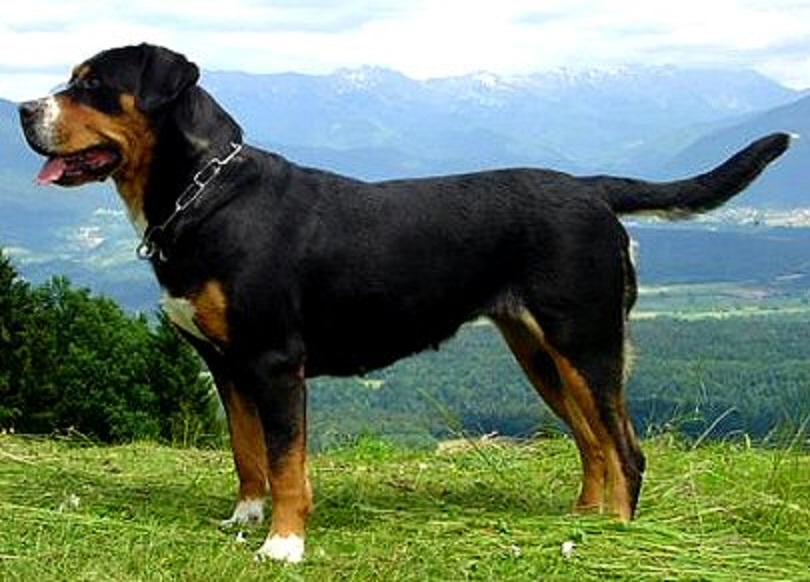
Entlebucher Mountain Dog

Navigate through the tabs
Navigate through the tabs below to view the breed's info of your interest.
The breed's info is divided in four sections; namely:
the breed's history ,
the breed's main stats ,
the dog's potential health issues
and finally, how the breed scored in 26 different categories.
All the above information should give you a respectively good overview for the dog of your interest.
Dog Breed's Main Info
The Breed's History:
All of the Swiss mountain dogs, including the Entlebucher, descend from mastiff-type dogs brought by the Romans more than 2,000 years ago. The dogs that became the Entlebucher was used to herd cattle to and from mountain pastures.
The dogs were first called Entlebucherhund in 1889. They were little known and generally considered the same breed as the Appenzell Cattle dog until 1913. That year, four of the dogs were exhibited at a Swiss dog show. Based on the judges' reports, they were classified in the Swiss Canine Stud Book as a fourth Mountain and Cattle Dog breed.
Even so, it wasn't until 1927 that a standard was written for them, after the founding of the Swiss Club of Entlebuch Cattle Dogs in 1926. The breed developed slowly but was eventually recognized for his lively, tireless nature and excellent qualities as both a working and family dog. The American Kennel Club recognized the Entlebucher in 2011.
Country of Origin:
Switzerland
Breed Group:
Herding
Height:
1 foot, 4 inch. to 1 foot, 8 inch. (40,64 to 50,8 cm)
Weight:
45 to 65 pounds (20,41 to 29,49 Kg)
Life Span:
10 to 13 years
Potential Health Issues:
Congenital Defects,
Hip Dysplasia,
Hemolytic Anemia,
Progressive Retinal Atrophy (PRA)
Adaptability
Apartment Living:
First Time Owners:
Sensitivity:
Being Alone:
Cold Weather:
Hot Weather:
Friendliness
Affection With Family:
With Kids:
With Dogs:
With Strangers:
Health and Grooming
Shedding:
Drooling:
Easy To Groom:
Overall Health:
Weight Gain Potential:
Size:
Training
Easiness:
Intelligence:
Mouthiness:
Prey Drive:
Barking or Howling:
Wanderlust:
Need For Exercise
Energy Level:
Intensity:
Exercise Needs:
Playfulness:
Our Mobile Application
Check out Our Mobile Application "Dog Breeds Central"
